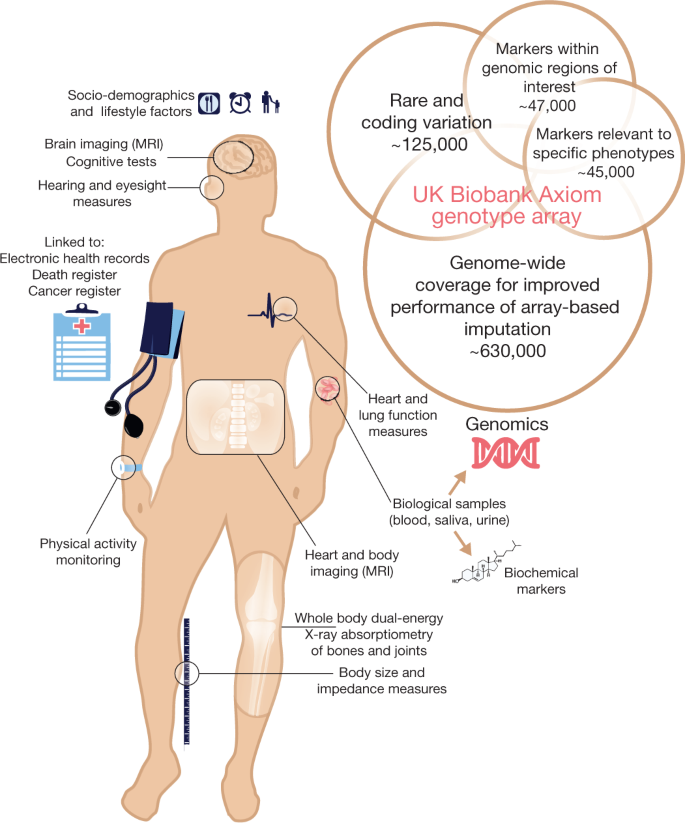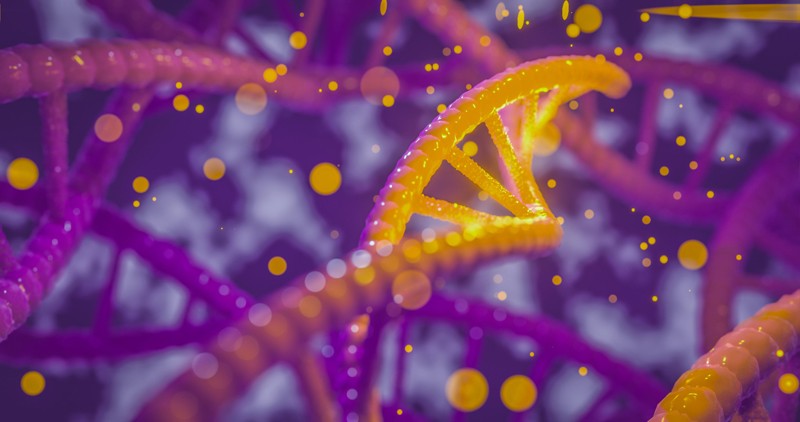每日外闻160
The UK Biobank
A wide variety of phenotypic information as well as biological samples have been collected for each of the approximately 500,000 UK Biobank participants (Fig. 1). At recruitment, participants provided electronic signed consent, answered questions on socio-demographic, lifestyle and health-related factors, and completed a range of physical measures (see Extended Data Table 1). They also provided blood, urine and saliva samples, which were stored in such a way as to allow many different types of assay to be performed (for example, genetic, proteomic and metabonomic analyses)7. Once recruitment was fully underway, further enhancements were introduced to the assessment visit, including a range of eye measures, an electrocardiograph test, arterial stiffness and a hearing test.
Fig. 1: Summary of the UK Biobank resource and genotyping array content.
 ](https://www.nature.com/articles/s41586-018-0579-z/figures/1)
](https://www.nature.com/articles/s41586-018-0579-z/figures/1)
Summary of the major components of the UK Biobank resource. See Extended Data Table 1 for more details. The figure also shows a schematic representation of the different categories of content on the UK Biobank Axiom genotype array. Numbers indicate the approximate count of markers within each category, ignoring any overlap. A more detailed description of the array content is available in the UK Biobank Axiom Array Content Summary2.
The baseline information has been, and will continue to be, extended in several ways. For example, repeat assessments are planned to be conducted in subsets of the cohort every few years, to enable calibration of measurements, adjustment for regression dilution, and estimation of longitudinal change. Objective measures of physical activity have also been collected (using a tri-axial accelerometer) in 100,000 participants in 2013–20148 with repeated measures being collected over a period of a year (on a seasonal basis) from 2,500 of these participants. A multi-modal imaging assessment is currently underway, which comprises magnetic resonance imaging (MRI) of the brain9, heart10 and body, carotid ultrasound11 and a whole body dual-energy X-ray absorptiometry of the bones and joints12. Data collection started in 2014 and is anticipated to take 7–8 years to achieve imaging for 100,000 participants in dedicated imaging assessment centres across the United Kingdom, with repeat imaging measures being planned for a subset of participants.
All participants provided consent for follow-up through linkage to their health-related records. As of May 2018, there were over 14,000 deaths, 79,000 participants with cancer diagnoses, and 400,000 participants with at least one hospital admission. Considerable efforts are now underway to incorporate data from a range of other national datasets including primary care, screening programmes, and disease-specific registries, as well as asking participants directly about health-related outcomes through online questionnaires (see Extended Data Table 1). Efforts are also underway to develop scalable approaches that can characterize in detail different health outcomes by cross-referencing multiple sources of coded clinical information13.
Measurements for a wide range of biochemical markers of key interest to the research community have also been carried out, including those that have known associations with disease (for example, lipids for vascular disease and sex hormones for cancer), diagnostic value (for example, HbA1c for diabetes and rheumatoid factor for arthritis), or the ability to characterize phenotypes not otherwise well assessed (for example, biomarkers for renal and liver function).
UK Biobank is an open-access resource that encourages researchers from around the world, including those from the academic, charity, public and commercial sectors, to access the data for any health-related research that is in the public interest.
Uk biobank的数据虽然是open-access的,但需要申请才能拿到原始的数据,下面这张图很好的描述了这个数据库所收集的参与者的各种健康相关的数据和还有样本指标:

2014年开始收集和跟踪的50万人,到2018年5月,超过1.4万人死亡,7.9万人被诊断为癌症,40万人至少入院一次。
See you tomorrow











